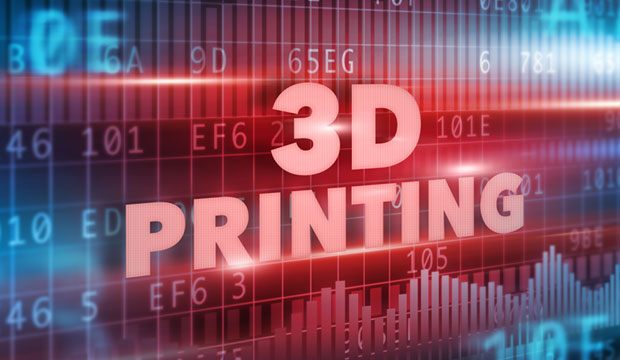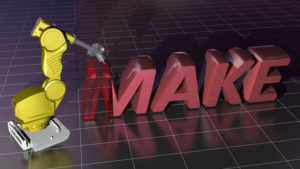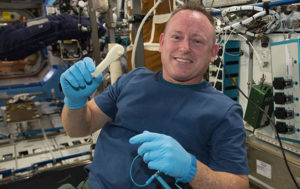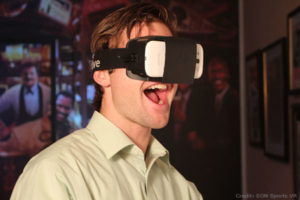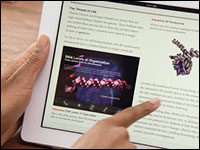To many, 3D printing is little more than a toy. A toy that mostly prints toys. To others, it’s a prototyping tool good for a hands-on feel of a manifested idea but not much more.
Yet for a select few, 3D printing is the heart of innovation, and each new iteration is pumping the future’s lifeblood.
Here are some of the innovations 3D printing is bringing to life.
The Pulse Behind the Tech
For years, scientists have wanted to create the equivalent of Star Trek’s replicator in the real world and have sought to develop the necessary technology.
The 3D printer was invented in the mid-1980s, according to a report by Michael Vidikan, founder of Future in Focus. While it was a rudimentary model, as inventions are wont to be, “progress in the industry has been slow but steady.”
Scientists and sci-fi fans aren’t the only ones who want to see 3D printing come to full Star Trek replicator functionality. Industries across the board envision substantial benefits once the technology is perfected, and some see benefits now.
The 3D Pulse Quickens
Known in the manufacturing sector as “additive manufacturing,” or AM, 3D printing is used heavily in prototyping already. There is also some use of it in producing machine parts since additive manufacturing — the layering of materials to make a product — generally is faster and more cost-effective than subtractive manufacturing — the cutting or pressing a product out of a material, thereby producing waste.
“In the coming year, we are going to see 3D metal parts being flight-tested in real applications, not just trivial parts — e.g., brackets, hinges, flanges — attached to noncritical components,” said Tim Simpson, professor of mechanical engineering at Penn State University.
“It’ll be done in the aerospace industry, which will then cause everyone else to fully commit to additive manufacturing. No one wants to be the first, but once someone else has done it, then no one wants to be last!” he told TechNewsWorld.
“Meanwhile, companies that don’t get into the game will start to lose employees to those that are readily using AM, which will create a further divide between companies that want to do AM and those that can do AM,” Simpson added. “Buying a machine is the easier part; learning how to run it well is challenging.”
Expect to see a seemingly sudden uptake in 3D printing in the manufacturing sector shortly — first in producing existing products but quickly moving into innovation.
“The main benefits are low cost, speed, versatility, and innovation,” said Jorge M. Zuniga, director of the 3D Research & Innovation Laboratory at Creighton University.
“The use of 3D printing brings professionals from different areas to collaborate, and innovation is a side effect of these collaborations,” he told TechNewsWorld.
However, manufacturing isn’t the only industry using 3D printing to its advantage or planning to increase that use going forward.
Infusions of New 3D Printing Blood
“Industries leveraging 3D printing in a sizable way today include dental; some other medical, such as hearing aids and surgical models; some limited and specific aerospace applications; and then the widely applicable consumer space for education, design and customization of collectibles,” said Michael Raphael, CEO of Direct Dimensions.
“I look for applications where the design is essentially consistent yet where each of them is unique for some reason,” he told TechNewsWorld.
Ease of customization arguably is most appealing to the medical and dental sectors, according to Raphael.
“Dental and medical are obvious. Teeth are essentially the same, but each is different. 3D printing shines for these applications because no tooling is required, and you can make them each unique just as easily as you can make them all the same,” he said.
“Following this paradigm, I look for adoption in other human body-related products. Medical devices, such as orthotics, braces, and splints, provide a good case. Other extractions would include protective gear, sports and performance gear, and footwear,” Raphael added.
The same holds true for printing customized human body parts.
“Patients have already received 3D-printed jaws, ribs, sternum, teeth, tracheas, and skulls,” said Steven J. Hausman, president of Hausman Technology Presentations.
“There will be no part of the body that will not be duplicated in the future, ranging from inexpensive customized prosthetics to bioprinted organs using the patient’s own stem cells so that tissue rejection will not be an issue,” he told TechNewsWorld.
Medicines increasingly will be 3D printed, partly driven by the need to contain healthcare costs and partly by President Obama’s precision medicine initiative.
“In August 2015, the FDA approved the first 3D-printed prescription drug — no doubt to be the first of many,” said Hausman.
Mobile First Responder
Another advantage to 3D printing is its ability to serve as a supply chain in remote areas and mobile venues.
“A low-gravity 3D printer that is able to operate in space has been created,” said Hausman. “This will permit the crew of the International Space Station to create replacement parts when needed without the necessity of awaiting a resupply mission from Earth. Similarly the ability to manufacture parts on demand has clear utility in military ships at sea.”
Imagine its use in disaster areas where blood, organs, artificial limbs, blankets, life-saving equipment, and even food can be produced on the spot.
“3D printing has gained traction in the food industry, where pasta, candy, and other foods can already be printed,” said Chinh Pham, who co-leads the emerging tech practice at Greenberg Traurig.
Industries in Transition
“The worldwide 3D printing industry is expected to grow from about $3 billion in revenue to close to $13 billion by 2018 and exceeding $21 billion in revenue by 2020,” he told TechNewsWorld.
Its impact won’t be entirely benign as it will disrupt several traditional industries, including shipping, which will be affected as manufacturers and retailers begin shipping 3D printer codes instead of goods. Supply chains on every front will feel the impact as well. How each is affected depends on how well it adapts to the change.
Stores such as Staples, FedEx, and UPS are already moving to adapt their business models to the upheaval 3D printing is likely to bring.
Retailers, too, may find it hard to compete when consumers can order 3D printing codes directly from designers and manufacturers and customize that code on their home 3D printers. Notions of bulk sizing will disappear as clothing printed to each customer’s exact measurements replaces sizes 0 to 18 for women.
All these changes will spur additional innovations as time progresses, personalization becomes imperative, and the technology and materials improve.

